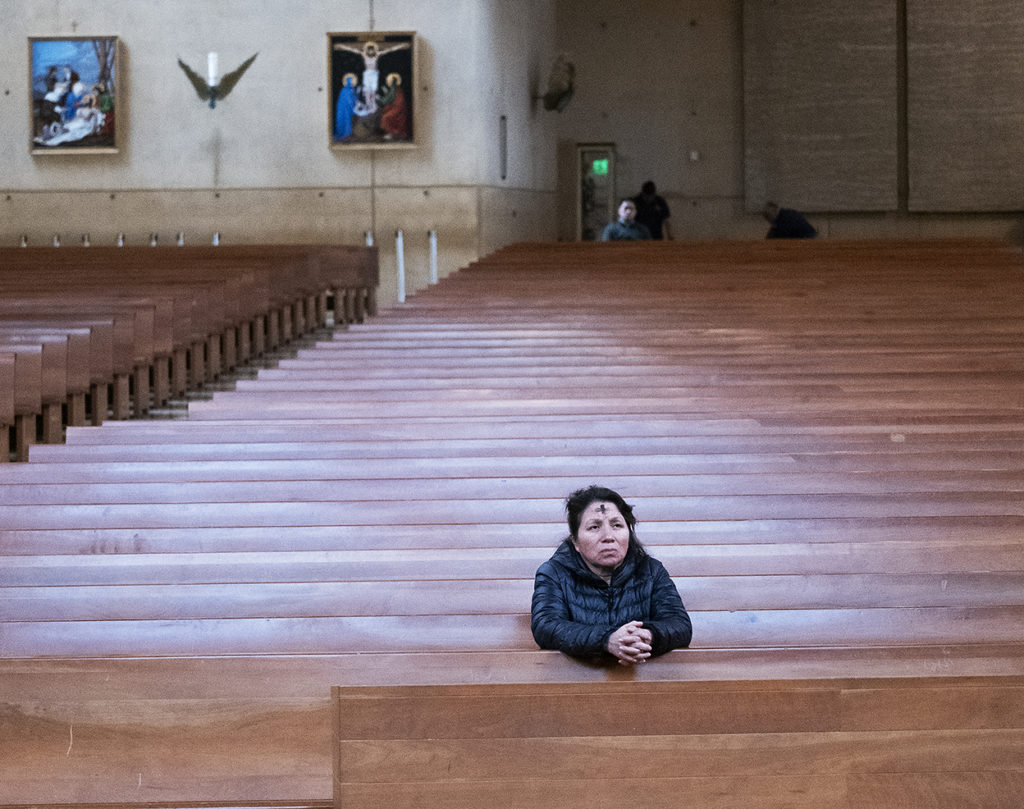“A perennial need within the Church is that more souls become contemplative, not just those in monasteries or cloisters, but hidden souls of prayer living in the world, mixing with the world, a leaven sanctifying it.”
— Father Donald Haggerty, “Contemplative Provocations”
Father Donald Haggerty is a priest for the Archdiocese of New York, serving at St. Patrick’s Cathedral.
He has been a professor of moral theology at St. Joseph’s Seminary in New York and Mount St. Mary’s Seminary in Maryland.
And for many years he acted as spiritual director to Mother Teresa’s Missionaries of Charity, whose sisters — in spite of what many of us would consider their extreme asceticism — he describes as some of the happiest people he has ever met.
His subject is contemplative prayer. His books, all from Ignatius Press, include “Contemplative Provocations” ($14.18), “The Contemplative Hunger” ($17.95), and “Contemplative Enigmas” ($15.70), and his newest, “Saint John of the Cross: Master of Contemplation” ($19.95).
But the one that’s galvanized me during Lent is “Conversion: Spiritual Insights Into an Essential Encounter with God” ($17.95).

In it, he speaks of a pattern he’s observed through the years: the second, deeper conversion. Often a person, sometimes for decades, will lead a virtuous life, participate faithfully in the sacraments and develop a deep life of prayer.
At some point such a person might hit a wall.
The old ways don’t work.
Imaginatively inserting ourselves into a Gospel scene or passage, for example, as suggested by the Ignatian Exercises, becomes a grinding chore.
The Office, though prayed as usual, might leave us cold. A restlessness, a sense of something missing, of a call not yet quite heard or discerned comes to pervade such a person’s consciousness.
Not to despair, says Haggerty: Christ is calling us, desiring us, inviting us to a surrender of self more total than anything we’ve yet experienced.
This “second conversion” awaits “every soul serious about God.” It “demands a conscious interior choice on our part, a defining choice in prayer that takes us across a threshold of surrender to God.”
I can only speak for myself but I think for many of us the hesitation in crossing the threshold comes from thinking, deep in our hearts, that perhaps we’re not wanted. I know Jesus loves me but does he like me? Would he even be able to stand my annoying quirks, fears, neuroses if we hung out in person? (After all, no one else much can.)
Also if you’re a contemplative type, you learn early on that no one much is remotely interested in or remotely understands the North Star by which you live and by which you hope to die.
I can’t count the number of times, unable to contain myself after days of relative silence, that I’ve breathlessly related some astounding insight I’ve discovered in prayer only to be met by a slack-jawed stare.
So you learn simply to accept that your real life is hidden. The world sees little value in such an existence, but you persist in believing that God does. You learn to persevere through long periods of aridity, desolation, staying seemingly stuck in various ways.
No problem: you don’t really expect anything else. There is always a flower, a bird, the sun, a kind word; a movie or book that captures the mystery and paradox of the human condition; the Gospels, a breviary.
There is always, thanks be to God, the Eucharist.
In fact, this irresistible attraction to the body and blood, to the Holy Sacrifice of the Mass, is a sign.
It’s not like so many people are falling all over themselves longing to offer up their own body and blood, Father Haggerty points out, that Christ doesn’t notice such a soul.
He’s noticed all along. He wants to share his secrets with us. And his secrets are his wounds.
“A sign of crossing the threshold into the ‘second conversion’ may be the sudden realization that it is the crucified Lord who dwells within our soul.”
The question becomes: So how far are we willing to go for him?
Haggerty describes what that willingness might look like: a widening consciousness of, and love for the poor. A desire for a simpler lifestyle around food, clothes, money.
Always deeper prayer, directed toward souls, which itself requires a life that is sacrificial.
In fact, the most valuable, radically old-new suggestion I took from “Conversion” was to practice a daily holy hour.
Adoration is of course ideal. Or we can sit in church before the tabernacle. And if for whatever reason neither of those is available, we can find a corner at home and pray in silence before a crucifix.
Is that extreme? Is that weird? Would I be trying to look “holy” in the eyes of God, the world, or worse, myself?
A whole hour?
The time is long past for such waffling, says Haggerty. Am I willing to die for Christ or not?
“At some point long after an initial conversion, another leap of soul is necessary. A decisive ‘yes’ to Our Lord is demanded, as it was earlier in life, but from a deeper layer of soul, overcoming any barrier of hesitation. Spiritual conversions of this kind may be the most important acts in our life.”

